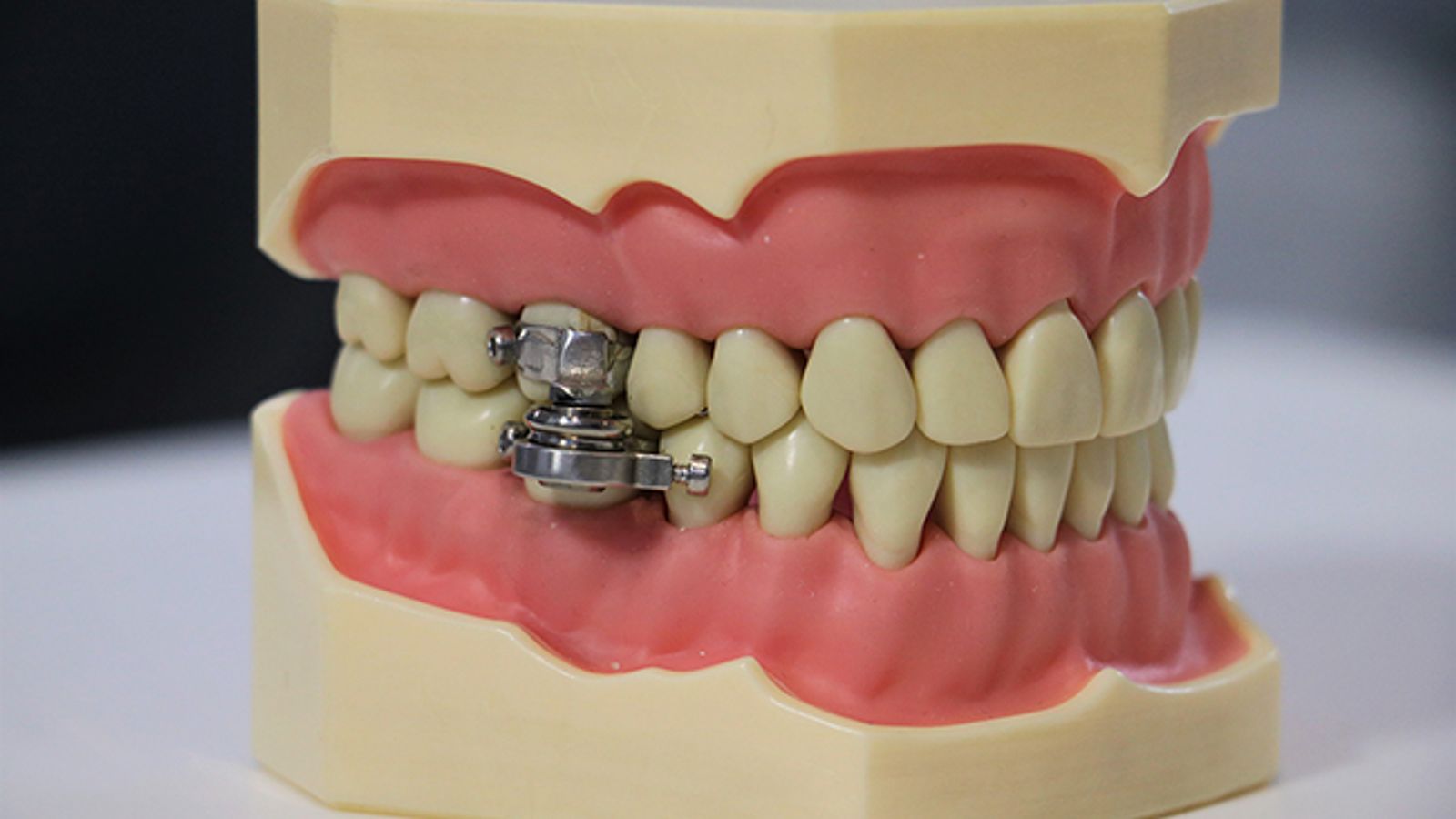A weight loss device which uses magnets to stop a person’s jaw from opening wide enough to eat solids has been developed by scientists in New Zealand and the UK.
The team, which involved medical professionals from the University of Otago and Dr Jonathan Bodansky and Dr Richard Hall from Leeds in England, say they created the device to help fight the global obesity epidemic.
The university tweeted: “Otago and UK researchers have developed a world-first weight-loss device to help fight the global obesity epidemic: an intra-oral device that restricts a person to a liquid diet.”
Called the DentalSlim Diet Control, the fixture can be fitted by a dentist to the upper and lower back teeth. It then uses magnetic devices with unique locking bolts.
The device, which allows users to open their mouths by only 2mm, was fitted in the mouths’ of seven healthy obese women from Dunedin in New Zealand for two weeks, according to an article published in the British Dental Journal.
During this time they were given a low-calorie “commercially available liquid diet” but not able to eat any solid food.
The article reports that the group lost a mean amount of 6.36kg – around 5.1% of their body weight.
However, the article states that the participants experienced discomfort, issues with their speech and “felt tense and embarrassed ‘only occasionally’.”
It added that they also “felt that life in general was less satisfying”.
One participant admitted to “cheating” by consuming melted chocolate and fizzy drinks.
Professor Paul Brunton from the university said of the device: “The main barrier for people for successful weight loss is compliance and this helps them establish new habits, allowing them to comply with a low-calorie diet for a period of time. It really kick-starts the process.
“It is a non-invasive, reversible, economical and attractive alternative to surgical procedures.
“The fact is, there are no adverse consequences with this device.”
But the device has received some criticism online with people on Twitter calling it inhumane and comparable to medieval forms of torture.
@gtiso tweeted: “A world-first and world-last, I sincerely hope. This is a torture device and you should be embarrassed to be promoting it, let alone to be associated with it.”
What if somebody needs to throw up? They just choke to death? What if the person has e.g. a heart attack and needs to be intubated quickly? This seems highly unethical.
@Natascha_strobl asked: “What if somebody needs to throw up? They just choke to death? What if the person has e.g. a heart attack and needs to be intubated quickly? This seems highly unethical.”
In response to the criticism, the university tweeted: “To clarify, the intention of the device is not intended as a quick or long-term weight-loss tool; rather it is aimed to assist people who need to undergo surgery and who cannot have the surgery until they have lost weight.
“After two or three weeks they can have the magnets disengaged and device removed. They could then have a period with a less restricted diet and then go back into treatment. This would allow for a phased approach to weight loss supported by advice from a dietician.”
The article states that this method was preferable to jaw wiring – another method of limiting food intake which became popular in the 1980s – which gives a high risk of choking if patients try to eat solid food or if they vomit, plus it can cause acute psychiatric problems.
The team said the tool could be particularly helpful for those having to lose weight before they can undergo surgery, and for diabetes patients for whom weight loss could initiate remission.
The research team consisted of Prof Brunton, Dr Jithendra Ratnayake, Dr Peter Mei and Dr Arthi Veerasamy, all of Otago University, Dr Jonathan Bodansky, of Leeds, and Dr Richard Hall, of RMH Consultancy, Leeds.






















